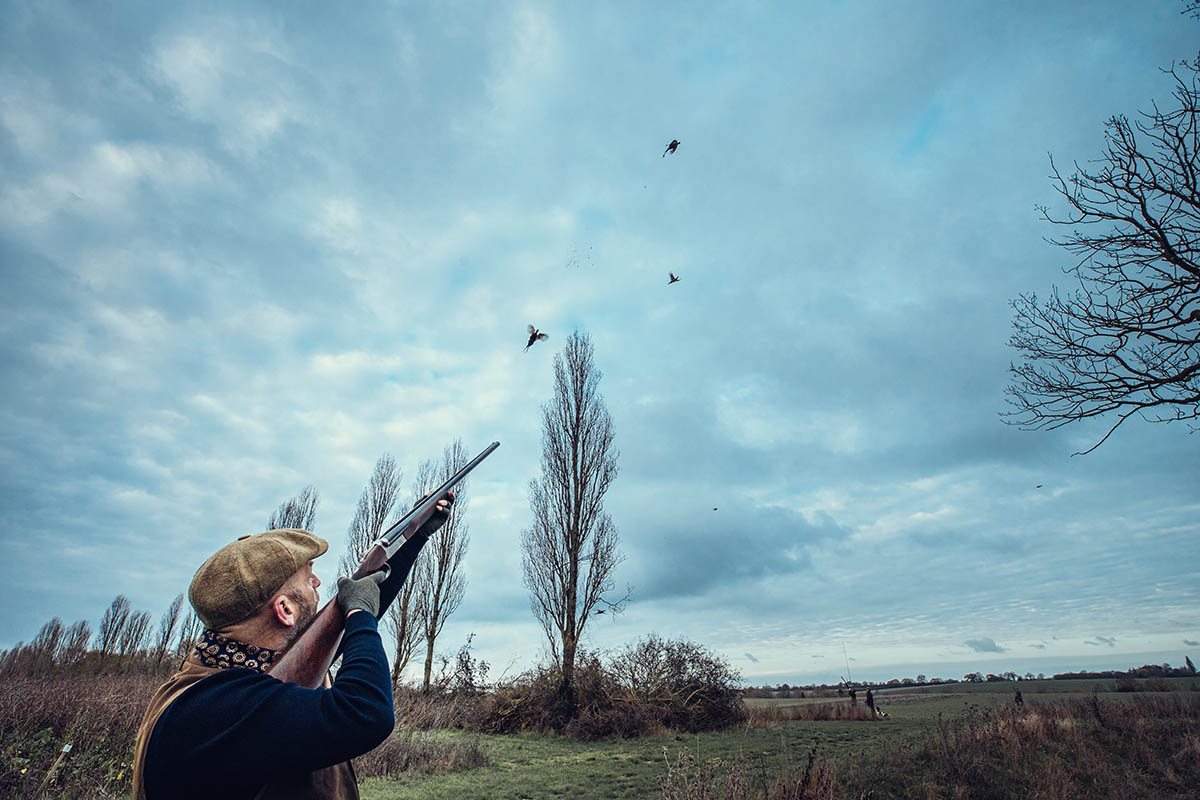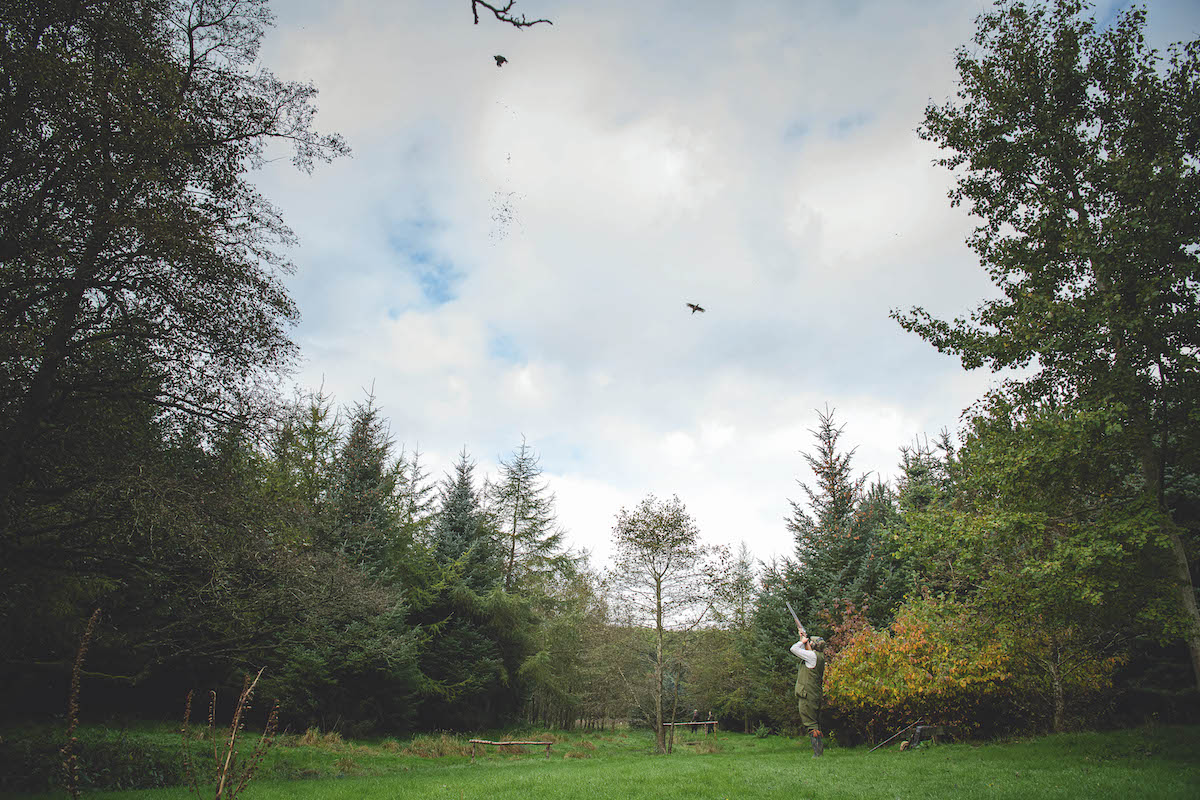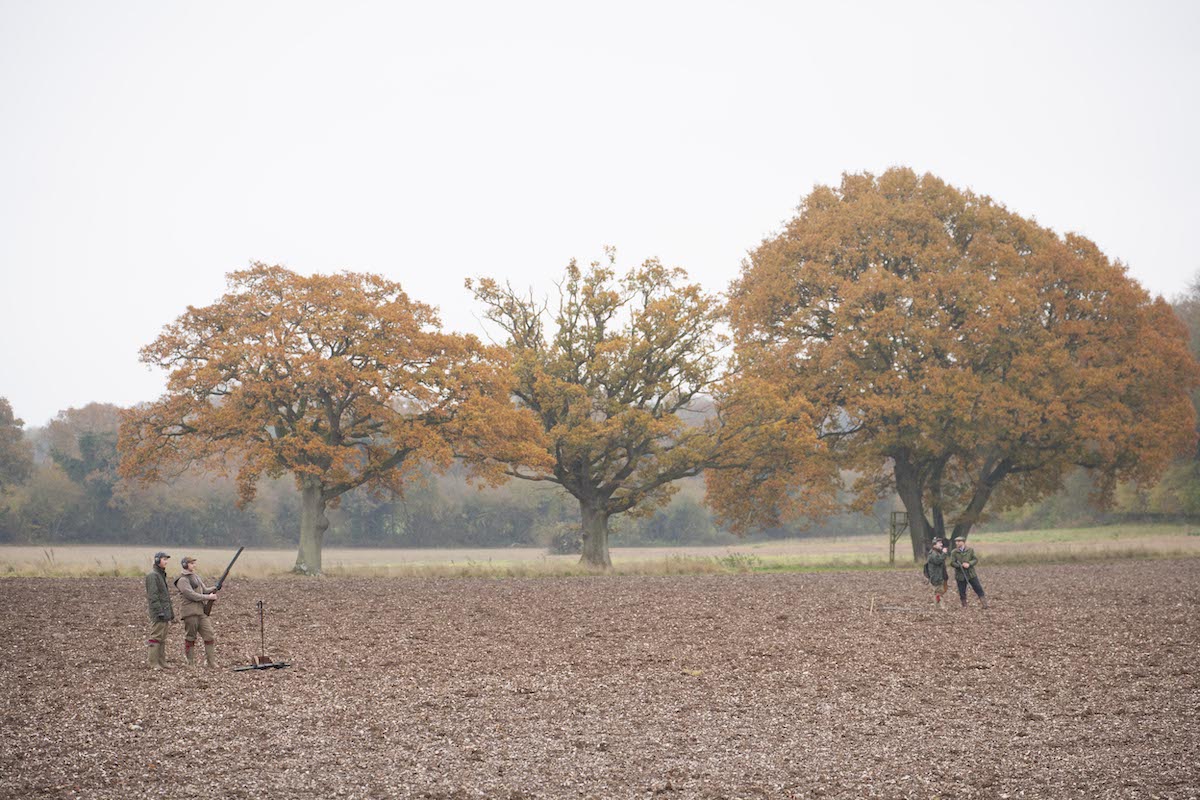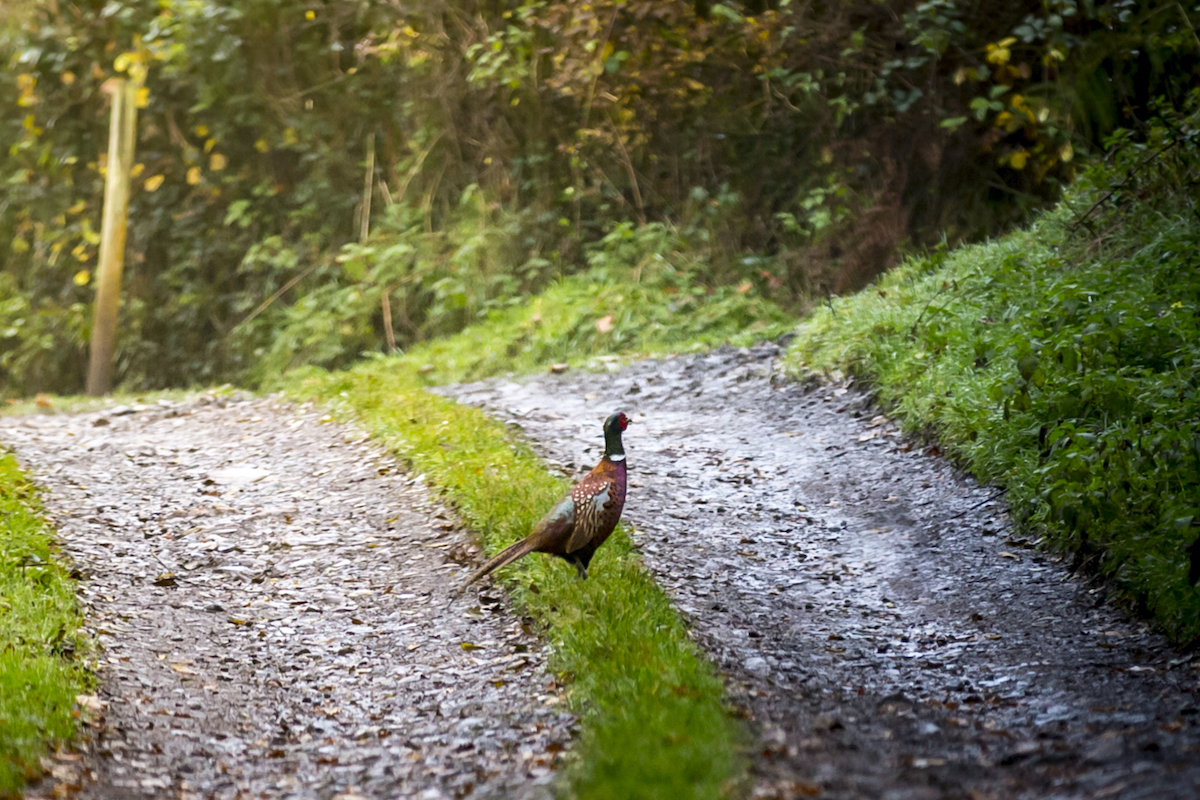When pheasants won’t show over Guns as they should
The numbers are there in the covers, but why aren’t Flea Barn’s pheasants showing over the Guns as they should?

Darren Sizer bags a right-and-left — much to his host’s delight
The little dog turned to me, ears cocked, awaiting my command to ‘hunt on’. We had scrub to blank-in and an hour in which to do it before the Guns arrived at 9am sharp. My son Charlie and his pal Marley flanked me. I waved Mabel forward and we tapped our way through a new plantation, then scrambled into a belt of thuja, thorn and bramble. Pheasants erupted from hiding places; the cocks took to the wing with a crow, wild hens jettisoned a squirt of guano as they whirred up.
My plan was to push the birds forward into the welcoming embrace of the cover slated for the first drive.
The hen birds flew wherever they chose. Bar from a few ‘walk-ins’, all had been fledged at Flea Barn — we had stopped releasing and shooting hens three seasons past. They knew the lie of the land better than any human could and made their way to safer places from which no amount of stick waving nor jarring shouts could dissuade them.
The cocks were even more problematic. I thought I had weighed up the wind that blew to the north-east, yet, as the cackling gaudy males topped the uppermost boughs of the evergreens, they set their wings and flew resolutely away from where I had planned they should go. “Ah well,” I said to Charlie, “I expect we’ll catch up with them later.”

The beating team discuss their next move on a day that doesn’t go according to plan
I hoped I sounded more positive than the voice inside my head. Dave Fox, Darren Sizer and Ian Alfieri were already waiting for me when we returned from our bad blanking — wildfowlers, like this trio, are always early. Next, in a line of vehicles, came Chris Ford, a poultry farming pal, gamekeeper Adam Steed, then cabinet maker and gunstock craftsman Adam Bragg. Ross Guyton, the tree guru, followed and finally Harry Nesling roared up driving the Gator, his younger brother Matt alongside him, ready to join the beating line.
Orchestra
All Guns assembled, the milling throng of beaters and pickers-up engaged in the usual banter that precedes a day’s shooting on farms such as this. A hush came over the assembled group and we stood like an orchestra, awaiting the arrival of the conductor. And arrive he did. Richard Gould appeared, having returned from a scout about on the other side of the farm, to give his heartfelt welcome and “cocks only and no greys please, gentlemen” briefing.
In a hush, as is required with wild birds, the Guns trod a surreptitious path to their pegs.
I took a party of beaters a mile or more away to begin our tap-tapping along a swathe of Moir Mix with a beetle bank running alongside it. The folds in the ground helped us to usher birds, rather than harry them, but with dogs at their tails a few took to the wing early and rose into a graphite sky.

Adam Steed, Darren Sizer and Ross Guyton shooting the drive known as Bennet’s
Much as I had seen when blanking-in, they seemed to fly where I wanted until they got up to a height of some 20 yards. There, a contrary wind caught them, causing the cocks to tilt their primaries, lean to starboard, and fly away from, rather than towards, the Guns.
Richard Gould, with his party of beaters, worked at right angles to our line of march, squeezing in a line of poplars and scrub, bordered by another wide swathe of wild-bird seed mix. The pheasants in this block behaved in a more seemly way and the first stuttering shots cracked out. A covey of greys jumped up in a hurry. I counted them swiftly, then the 10 veered away, following the contours like an aerobatic display team.
Countless hen pheasants began to fly in their harum-scarum way. I was thrilled to see them — our wild stocks were better than I had realised. A miscommunication between the two beating lines caused us to miss one another and the drive fizzled out rather than ended. I looked hangdog and Gouldy was kind enough not to give me a telling off.
Pedometer
The Guns seemed content, however, and I saw no reason to let on that things hadn’t gone completely to plan. On to the next drive we wandered. This is a shoot with no stuffy Gun bus nor rattling trailer — by the end of the day my pedometer informed me I had walked a shade over 10 miles.
Flea Barn is laid out so the main wood is like the hub of a cartwheel. The hedges and accompanying cover and bird seed crops form the spokes. Blobs of ponds glint along the lengths, as if the wheelwright had a taste for bling. This layout is superb for wildlife, linking habitat to habitat, yet from a pheasant-shooting perspective it can leave drives at the mercy of weather conditions.
If the meteorological gods are kind and a westerly blows, the Guns can be placed just so and the birds fly well to them. As it started to dawn on me, after two somewhat lacklustre drives, if the wind blew contrarily, we were in choppy waters.

Beaters work their way through wildflower mixes that form the spokes of Flea Barn’s cartwheel
The fourth drive we call the Grain Store, named after the starkly modern barn that sits on the highest part of the farm. The drive is shaped in an ‘L’. The shorter horizontal length is a 150m long and 30m wide block of willow, annually harvested to make woven hurdles and fencing. The longer vertical bar is 800m long and 30m wide. This wild-bird seed block is edged by a 6m wildflower margin, next to which is a hedge. Laid three seasons ago, it’s an impenetrable mass of thorn, maple and elm sucker.
Pheasants love this place, as do the greys, which made their presence known in a flurry, ‘kerr, kerring’ as they shot off. We spied eight coveys throughout the day, warming the heart and rekindling the hope that we were doing something right here.
Despite the usual plethora of birds, the drive proved a disappointment. What birds there were flushed with gusto, a few flew in the right direction, but numbers were a fraction of what I expected. By lunch, I was scratching my head. Gouldy and I huddled together to discuss our problem.
“We just haven’t got the game that you thought we had,” he concluded. “The wind isn’t helping,” I added by way of mitigation, but I knew I was probably making excuses.
Hand feeding
I pondered on our lack of birds as I ate one of my wife’s curried pheasant pasties. About three weeks before, I had reduced the number of feeders on the farm to mitigate against any potential for bird flu. This coincided with the start of a prolonged period of rain. I began a campaign of hand-feeding the rides and margins on foot, scattering wheat from my side bag.
My daily morning ramble split the farm into sevenths, rotationally feeding a bag per day. It only now occurred to me, in my very novice keepering way, that my new regime had caused birds to wander off the farm in search of easier sustenance. Once off the farm, they had stayed off. The birds that I saw on a daily basis were our loyal wild stock, more than adept at gleaning a harder won existence. Of our 200 reared cock birds, an unknown number had seemingly leached off. I gnashed my teeth at the thought of them enjoying someone else’s feeders and no doubt falling to someone else’s gun.
Flea Barn Wood formed the last drive of the day. Gouldy rallied the troops for this final push and we blanked-in field after field before we started our way through the dense understorey. Carefully placed stops shepherded birds that sought to make an escape on foot. Faced with a determined line behind them and well-hidden Guns before, the cocks started to fly as they should. Through the screen of near-leafless trees, I spied Darren bag a right-and-left and my heart soared. A regular ripple of shots ran along the line and all our guests began to get some shooting.
Woes of leaking birds and unfortunate wind were forgotten — one good drive can do that to a man.








